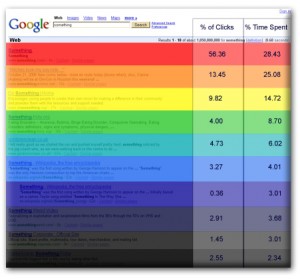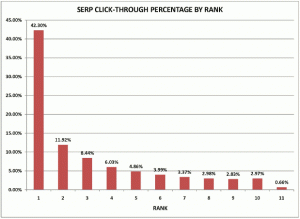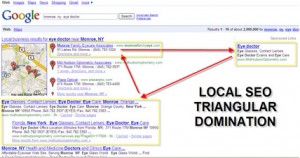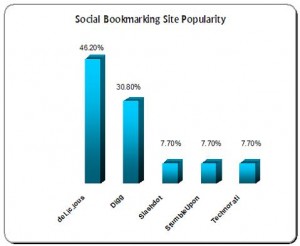Predicting the payoff from SEO
Wednesday, March 23rd, 2011
SEO and local SEO are critical components of marketing for every website. There are many tips and techniques that are widely available that can help you increase the chances of getting a high ranking for the search keywords and phrases that are central to your marketing strategy.
Everyone knows that a higher ranking is better, but exactly how high does your ranking have to be to generate significant traffic for your website? Is it possible to predict how much traffic you can generate for a given search phrase and ranking?
It is well known that you can use a resource such as the Google Keyword Tool to estimate monthly traffic for a keyword. Once you have that number, the question becomes: given a particular ranking, what percentage of those searches will result in a visit to your website? You can’t really create a reliable, comprehensive search phrase strategy without this critical piece of information.
There is a variety of counsel and opinion on this topic, not all of it consistent. For instance, one website, which provides research, training and educational services exclusively for the publishing industry, states the following rule of thumb:
“When your website or landing page turns up on page one in Google, you’re getting 100% visibility…But what happens when your landing page ends up on page two or three? We estimate that you’re getting about 32% Google visibility on page two, meaning only about 32% of users ever click through to page two, and a meager 7% visibility on page three. If you’re on page four or beyond, you simply don’t have a chance of being seen by your potential customers.”
The authors cited no source for this rule of thumb, or explanation of how they developed it. There are a number of other rules of thumb about click distributions floating around on the web, which are entirely inconsistent with the above. I’m not going to dwell on these here; I’d rather get right to the data I believe is the most credible and useful.
SEO Click Disributions – The Best Data Avaliable
There have been several eye-tracking studies that have been done over the past few years, all of which produce consistent results. Perhaps the best-known among them is a study that was performed at Cornell University that showed the following:
This data tells a far different tale than the rule of thumb cited above: the first three ranks get 80% of the clicks, and the first page gets 98.9% of the clicks!
You might object, and I would agree, that this data is derived from an eye tracking study, not actual searches, and would thus compel some caution on extrapolating the results. Fortunately, there is some actual data available. In 2006, AOL leaked some data on over 36 million queries. The data was analyzed by Richard Hearne, and the results are as follows:
These results, by and large, are consistent with the Cornell eye-tracking study, in that the first page attracts an extremely high percentage of the clicks. The first three ranks garner 63% of the clicks; the top 10, 90%; the top 20, 94.5%. Here are the percentages for ranks 1-21, 31, and 41:
Viewed another way, an improvement in rank from second to first will almost quadruple the number of clicks. The number one ranking produces as many clicks as ranks two through eight combined. The drop-off in clicks is enormous by the time you get to the second page; a rank off 11 produces only .66% of the clicks; in comparison a rank of 10 produces more than 4 times as many, and the number 1 rank more than 60 times as many!
This click distribution has also been confirmed by an independent set of search data analyzed by Enquisite, a firm that specializes in search optimization software. Based on a proprietary data set of 300 million searches, the first page grabbed 89.71% of the clicks; the second 5.93%; the third, 1.85%, the fourth, .78%; and the fifth, .46%.
Since there are several methods that have produced highly similar results, there is a high degree of confidence that this data provides a reliable foundation on which to base an SEO strategy.
Implications for SEO Strategy
- The ranking you can achieve for any given search phrase depends on a number of factors, including how well you optimize your pages for the search phrase, your page rank, and the amount of competition. If you opt to compete for high volume search phrases with a lot of competition, you have to realistically weigh the chances that you can make the first page.
- A better option may be to pursue a long tail strategy, in which you set your sights on achieving a number one ranking on lower volume search phrases with lower levels of competition. This strategy necessarily involves multiple keywords in order to generate significant volumes of traffic for your website.
- But perhaps the best option of all, made possible by this data, would be to pursue a mixed strategy. The increase in traffic you can expect from improving your ranking for any particular search phrase can now be predicted. You can therefore weigh the incremental increase in your website traffic for an entire portfolio of search phrases, and allocate your efforts in a way that will optimize your ROI.







